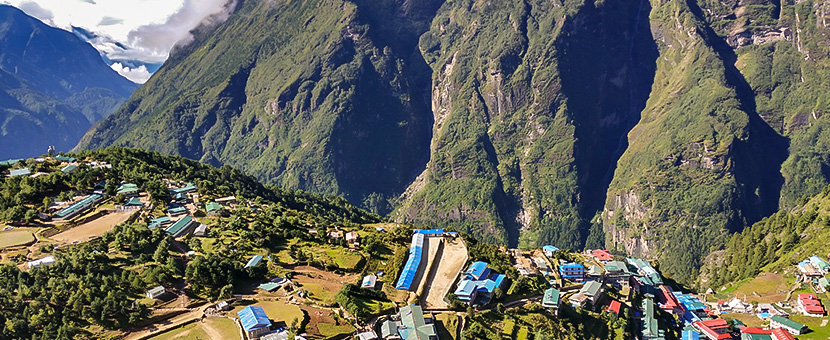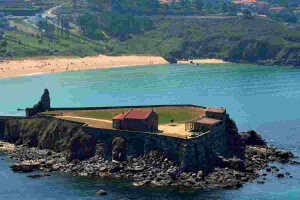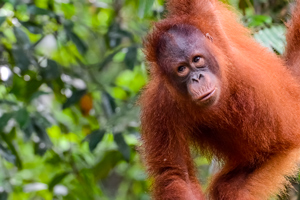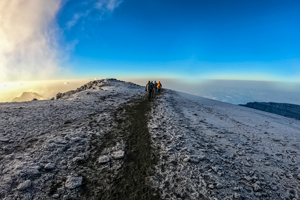Subscribe to newsletter
Find out about flash sales, new trips, what's new and gear giveaways.
Prices
From USD$1,950
-
13 days / 12 night
See available dates
-
Difficulty
- Guided
- Lodges
-
- No Booking or Credit Card Fees
-
- Save Money
-
- Happiness Guaranteed
Is this tour for me?
The Everest Base Camp trek is a moderately difficult trek, and you should have experience trekking in the mountains before. We rate this tour as a 4 / 5. Sections of the trail are strenuous, but at higher elevations, even easier sections of trail become more challenging. Consult your doctor if you have concerns about trekking at high altitudes.
Get In Touch
SALE!
Let me know when you have flash sales.
Highlights
Trek through incredible scenery on the world-renowned Everest Base Camp Trek
Hike to the original Mount Everest Base Camp at Gorak Shep, then continue to the current Everest Base Camp (EBC).
Climb to the peak of Kala Patthar, the viewpoint that is widely recognized to be the best vantage point for viewing Mount Everest, in time to see this epic view at sunrise.
Explore Nepal’s rich history and culture, including visits to Buddhist and Hindu temples, Sherpa mani walls and prayer flags, and more.
Stay in family-run tea houses along your trek, which allows you to meet native people and experience the local hospitality.
A trek to Everest Base Camp is a trekking adventure like no other. Stand at the foot of the tallest mountain in the world. See Mount Everest from many different vantage points, including the renowned viewpoint at Kala Patthar, where you can watch the sunrise over this fabled mountain.
Breathtaking landscapes abound in this Himalayan mountain paradise, and you will spend many days surrounded by their beauty and majesty. As you travel to the region, view these massive mountains from above on an unforgettable airplane ride from Kathmandu to Lukla.
This tour also allows you to experience life in native Sherpa villages, introducing you to native people and exposing you to their history and culture. Experience for yourself why a trek in the Himalayas is a life-changing experience for so many who undertake this journey. Book your Everest Base Camp guided tour today!
A trek to Everest Base Camp is a trekking adventure like no other. Stand at the foot of the tallest mountain in the world. See Mount Everest from many different vantage points, including the renowned viewpoint at Kala Patthar, where you can watch the sunrise over this fabled mountain.
Breathtaking landscapes abound in this Himalayan mountain paradise, and you will spend many days surrounded by their beauty and majesty. As you travel to the region, view these massive mountains from above on an unforgettable airplane ride from Kathmandu to Lukla.
This tour also allows you to experience life in native Sherpa villages, introducing you to native people and exposing you to their history and culture. Experience for yourself why a trek in the Himalayas is a life-changing experience for so many who undertake this journey. Book your Everest Base Camp guided tour today!
Read more

Everest Base Camp Trek Itinerary
Day 1 Fly to Lukla, Trek to Phakding
Today you’ll get a bird’s eye view of the incredible mountains as you fly above them from Kathmandu to Lukla (2,845m/9,334’). When you arrive, you’ll meet your trekking crew and enjoy a break for tea. Then the trek begins! Today’s trek is both short and easy, but it may feel challenging due to the elevation. Begin your trek northward to the Dudhkoshi Valley, then descend from the plateau into the wooded valley. After a lunch break, continue north, crossing several streams until you reach Phakding (2,650 m/8,694’). Spend the night in the Phakding settlement, surrounded by inspirational views.
Overnight Location: Lodge in Phakding (2,650 m/8,694’)
Distance: 8 km, 5 hours, 100 m of ascent
Meals: Breakfast, Lunch, Dinner
Day 2 Trek to Namche Bazaar
Today’s hike goes through farmland and passes through settlements on your way to Namche Bazaar (3,440 m/11,286’). The trail follows the Dudh Kosi River to the north, through fantastic forests filled with magnolia, fir and rhododendron trees. After you cross the Bhote Kosi, the western fork of the river, you’ll begin to climb steeply up to Namche Bazaar. This village, a large and prosperous Sherpa village, is referred to as the Gateway to Mount Everest, and is also an important center for trade. A bazaar, or market, is held here weekly where sellers from many local villages gather to sell fresh food.
Overnight Location: Lodge in Namche Bazaar (3,440 m/11,286’)
Distance: 10 km, 7 hours, 700 m of ascent, 200 m of descent
Meals: Breakfast, Lunch, Dinner
Day 3 Acclimatize in Namche Bazar
Today is a rest day to allow time for your body to acclimate to the altitude. It is recommended that you stay active even on rest days as this will help you as you continue trekking. A short hike to the nearby villages of Thamo or Synboche will help you be both physically and mentally fit to continue your journey.
Overnight Location: Lodge in Namche Bazaar (3,440 m/11,286’)
Distance: 6 km, 3 hours, 300 m of ascent, 300 m of descent
Meals: Breakfast, Lunch, Dinner
Day 4 Trek to Tengboche
Today’s hike takes you from Namche up to Tengboche (3,870 m/12,697’) over a beautiful path through rhododendron forests, over suspension bridges, and past religious monuments called chortens or stupas, and walls built from prayer-inscribed mani stones. The entire route is breathtaking, with the Dudh Kosi River far below you and the majestic Himalayan peaks of Thamserku, Ama Dablam, Kantega, Lhotse, and of course Everest rising ahead of you. This will be an incredible day of trekking.
Overnight Location: Lodge in Tengboche (3,870 m/12,697’)
Distance: 11 km, 6-7 hours, 600 m of ascent, 400 m of descent
Meals: Breakfast, Lunch, Dinner
Day 5 Trek to Dingboche
After breakfast, you can visit the lovely Tengboche Buddhist Monastery. The Lama will tell you the story of the yeti, and you may have an opportunity to witness their prayer time. Descend from here to Deboche for lunch at a lodge, then continue your trek after lunch to Dingboche. This walk to Dingboche is considered by many to be among the most beautiful valley paths on earth. Spend the night at Dingboche (4,410 m/14,469’).
Overnight Location: Lodge in Dingboche (4,410 m/14,469’)
Distance: 12 km, 6 hours, 985 m of ascent, 700 m of descent
Meals: Breakfast, Lunch, Dinner
Day 6 Acclimatize in Dingboche
Today is another acclimatization day to help you adapt to the changes in elevation, environment, and climate. While a rest day, staying active today will help you prepare for the remainder of your journey. A suggested day hike from Dingboche is to hike up along the Imja Khola River to reach the peak of Chhukung Ri or Nagarzhang. From here you can see the fluted ice walls which flank the Amphu Lapcha Pass, as well as breathtaking views of Lhotse, Island Peak, and Ama Dablam.
Overnight Location: Lodge in Dingboche (4,410 m/14,469’)
Distance: 12 km, 7 hours, 700 m of ascent, 700 m of descent
Meals: Breakfast, Lunch, Dinner
Day 7 Trek to Lobuche
Continue your ascent to Everest Base Camp today by crossing through lovely alpine meadows which serve as yak pastures in the summer. You’ll reach the end of the Khumbu Glacier moraine. The climb up toward the village of Gorak Shep is steep and tough. Stop for the night at Lobuche (4,910 m/16,109’) with a direct view of Nuptse mountain and a truly magnificent sunset.
Overnight Location: Lodge in Lobuche (4,910 m/16,109’)
Distance: 8 km, 5 hours, 350 m of ascent, 60 m of descent
Meals: Breakfast, Lunch, Dinner
Day 8 Trek to Gorak Shep and Everest Base Camp
The trek from Lobuche to Gorak Shep today is quite a challenge, particularly due to the higher elevation. Climb the Khumbu glacier then cross the Changri glacier to reach Gorak Shep (5,140 m/16,864’). From here, explore further to reach the Everest Base Camp (5,364 m/17,598’). Expect more stunning views today. Return to Gorak Shep to spend the night.
Overnight Location: Lodge in Gorak Shep (5,140 m/16,864’)
Distance: 9 km, 8-9 hours, 500 m of ascent, 270 m of descent
Meals: Breakfast, Lunch, Dinner
Day 9 Trek to Kala Patthar, then Pheriche
Today we’ll check in to see how you’re doing physically before continuing. If you’re in good condition, then the trek continues to Kala Patthar (5,550 m/18,209’). This hike starts early in the morning so that you reach Kala Patthar in time to watch the sunrise with a spectacular panoramic view of Mount Everest and Pomo-Ri. The Kala Patthar climb begins at Gorak Shep, which was the original Everest Base Camp. After enjoying the views from the landmark overlook of Kala Patthar, return to the lodge at Gorak Shep to eat breakfast, then continue your hike, descending to Pheriche (4,240 m/13,911’) to spend the night.
Overnight Location: Lodge in Pheriche (4,240 m/13,911’)
Distance: 16 km, 8-9 hours, 500 m of ascent, 1,400 m of descent
Meals: Breakfast, Lunch, Dinner
Day 10 Trek to Phortse
The trail today is relatively flat, ascending gradually through the forest from Pheriche to Phortse. The village of Phortse is remote but beautiful. You’ll enjoy incredible scenery and the opportunity to meet and talk with the local villagers. Spend the night in Phortse (3,680 m/12,073’).
Overnight Location: Lodge in Phortse (3,680 m/12,073’)
Distance: 14 km, 6-7 hours, 400 m of ascent, 1,200 m of descent
Meals: Breakfast, Lunch, Dinner
Day 11 Trek to Khumjung then Monjo
After breakfast, hike for about 1.5 hours to the village of Khumjung, which has special significance in this region for many reasons. It is the situation at the base of Khumbi Yul Lha (or Khumbila), a mountain that is considered sacred. The region derives its name from this peak. There is a monastery here that is said to hold a scalp from the legendary yeti. As you leave Khumjung, you will pass a school that was established by Sir Edmund Hillary. He raised funds to establish several schools to help educate the Sherpa people and his educational legacy continues to this day. Continue hiking toward Namche, where you can stop and explore for several hours, then continue to Monjo (2,840 m/9,318’). At the peak, enjoy incredible views over Namche. As the trail descends, you’ll cross a clear tree line and notice your surroundings becoming increasingly green and lush, with small streams and waterfalls along your route.
Overnight Location: Lodge in Monjo (2,840 m/9,318’)
Distance: 14 km, 5-6 hours, 700 m of ascent, 1,400 m of descent
Meals: Breakfast, Lunch, Dinner
Day 12 Trek to Lukla
Finish your trek today with a steep hike down to the Dudh Kosi River, then a long but gentle trail takes you back to Lukla. You can celebrate your completed journey by relaxing at the local tea house with clear views back to the mountains you’ve just explored. Tonight, it’s time to say farewell to the crew that accompanied you on your trek. Spend the night in Lukla (2,850 m/9,350’) and prepare to travel back to Kathmandu tomorrow.
Overnight Location: Lodge in Lukla (2,850 m/9,350’)
Distance: 13 km, 6-7 hours, 700 m of ascent, 600 m of descent
Meals: Breakfast, Lunch, Dinner
Day 13 Fly to Kathmandu
The return flight from Lukla to Kathmandu is just as spectacular as your first flight, but perhaps even better now that the mountains have become more familiar. After you land in Kathmandu, the remainder of the day is free to explore, go shopping or sightseeing, or simply find a great cafe or roof-top restaurant to relax and rest after your amazing journey.
Overnight Location: Mandala Boutique Hotel (1,400 m/4,593’), Kathmandu
Distance: None
Meals: Breakfast
2018
2019
Everest Base Camp Trek Price and Dates
This guided trekking tour in Nepal is run either as a private tour for your group only, however, sometimes there are options to join other groups (please enquire for more information). The pricing depends on the number of people on your group.Pricing below is per person:
- Guided group of 2+: USD1950 per person
Accommodation on Everest Base Camp Trekking Tour
This tour is based in trekking lodges, also called tea houses, along the trek. These accommodations are simple since there is no road access to reach them, but they are also friendly and full of atmosphere. Most lodges have dining areas that are heated, but the bedrooms are typically unheated. Wooden beds with foam mattresses are provided, but you will need a sleeping bag. Washing and toilet facilities are shared, and some have solar showers available for an additional charge.
Before and after your trek, you will be staying in a 3-star hotel in Kathmandu. Rooms are double occupancy, and single travellers will pay a supplement.
In some cases, accommodation listed below may need to be substituted for other, comparable accommodations.
Single Rooms and Solo Travelers
You can pay a supplement of USD315 to have a private room in a hotel. Contact us and we can try and match single travellers up, where possible. Private rooms are not available in the trekking lodges.
What’s included in the Everest Base Camp Trekking Tour?
Meals
12 breakfasts, 13 lunches, 12 dinners are included on this tour.
Accommodations
Accommodations for all 12 nights are included. Along the trek, stay in simple trekking lodges (tea houses). It is highly recommended that you book additional nights in Kathmandu before the trek to get used to high altitudes (you can do this during the booking process).
Transportation during the Tour
Domestic flights and land transportation described in the itinerary are included, as well as all airport taxes.
Also Included
- An experienced, insured and equipped English-speaking guide
- TIMS permit
- National Park permit
- Porter (Insured and equipped according to IPPG rules)
- Acclimatization days exploring Namche and Dingboche
- Visit to the village of Phortse, a traditional Sherpa village in the Khumbu region
Not included
- Flights to/from Kathmandu
- Visa to enter Nepal
- Meals not listed as included (lunches and dinners in Kathmandu)
- Personal drinks / alcohol
- Additional costs due to illness, rescue, force majeure, flight/itinerary changes
- Tips for guides and other trekking staff
- Personal costs such as charging batteries or hot showers
Optional extras
- Kathmandu package: airport pickup and drop off, 4 additional nights in Kathmandu in 3-4-star hotel, welcome dinner, Kathmandu City Tour: USD260 per person
- How hard is the Everest Base Camp Trek?
- Should I be concerned about altitude trekking to Everest Base Camp?
- Do I need a Visa?
- Are meals included?
- Do I need insurance?
- How do I get to Kathmandu to start this tour?
- Are the tours in English?
- Where does the tour end?
- What should I pack?
- Can I charge my phone / camera / other device?
- How much spending money will I need?
- How much should I tip my guide and porter?
- Do I need vaccines?
- Are there any travel restrictions for this country?
- When is the best time to travel to Nepal for this tour?
The Everest Base Camp trek is a moderately difficult trek, and you should have experience trekking in the mountains before. We rate this tour as a 4 / 5. Sections of the trail are strenuous, but at higher elevations, even easier sections of trail become more challenging. Consult your doctor if you have concerns about trekking at high altitudes.
You should always check with your doctor before taking a trekking tour at elevation. On this trekking trip to Annapurna the sleeping elevation is a maximum of 2,000m (6,560’), below the level where it is a significant concern. On the Everest Portion, the trek goes higher, and you will feel the elevation. The maximum elevation you sleep at is 4,250m (13,944’), which is high altitude, and will impact your stamina, sleeping and could pose health risks. This trek follows a standard route in the Everest region designed to slowly gain elevation.
Check with your local country about visa requirements. You could also try this website, though you should verify with your government.
12 breakfasts, 13 lunches, 12 dinners are included on this tour.
Yes, it is mandatory to have Health and Medical insurance to join this trip. Get your Travel Insurance.
The Tribhuvan International Airport in Kathmandu is the only international airport in Nepal. If arriving in Nepal by air, you must fly to this airport.
Yes, the tour guide is English speaking.
The tour ends where it begins, in Kathmandu.
You will be given a complete packing list for your trek upon booking. Plan to layer your clothing to be comfortable at different temperatures. You should be able to add a waterproof layer (jacket and trousers) to stay dry, as well as protect yourself from the sun with a hat and sunglasses. A headlamp with extra batteries is also recommended. You will carry your own daypack (30 L recommended) during the day and your baggage on the trek is limited to 12 kg. You should also have a sleeping bag (suitable for 10°C), dry bags, a padlock (to lock your trek bag) and a basic first aid kid. Please respect the traditional Nepalese culture by dressing conservatively (avoid bare shoulders and keep legs covered)
You may need an outlet adapter for any electrical items. You can find more information about this HERE. Electricity will not always be available along the trek. Some lodges will have solar powered charging facilities for an additional hourly fee.
Plan to have cash, exchanged into Nepali rupees. It is possible to withdraw rupees from ATMs in Kathmandu but not outside the city. An estimated $400-600 USD per person should be enough for meals in Kathmandu, drinks, snacks and other personal expenses such as showers and charging batteries in the trekking lodges. This should also cover tips for your guide, porters, and other trek staff.
Guides and porters appreciate your tips, and this forms a large portion of their compensation. If you receive good service, you should plan on tipping your guides approximately $3-$5 / per day per person in your group. You should tip your porter $2 - $4 per person per day. A larger group would tip on the lower end of the scale, while a smaller group of 2-5 would tip on the higher end.
Check with your family doctor.
Please check with your local government about travel restrictions before you book your tour. This map from the US Department of State provides an overview of the current status in countries around the globe. The UK‘s Foreign Office and Government of Canada also provide advice on foreign travel. Note that the travel advice may change depending on your nationality.
This tour is available year-round. The best time to travel to Nepal for this trek is during the pre-monsoon season from March through early May, or post-monsoon in October and November. Monsoon season typically lasts from late May through September.
Customer Ratings
0.0
Technical Difficulty
Physical Difficulty
Based on 0 customer reviews


Trekking Team Group is a Travelife and FTA certified tour operator creating trips in the Himalayas since 1991. They are consistently highly-rated online and garner impressive word of mouth recommendations.
Trekking team focuses on a sustainable method of operation. They work with highly professional guides and offer clients flexibility and 24/7 service.
The company uses local guides, serves local food, and makes use of local homes and lodges to give back to the community. They support the local environment and in turn see many repeat customers.
Group savings
Get the Trip you want
Subscribe to newsletter
Find out about flash sales, new trips, what's new and gear giveaways.


